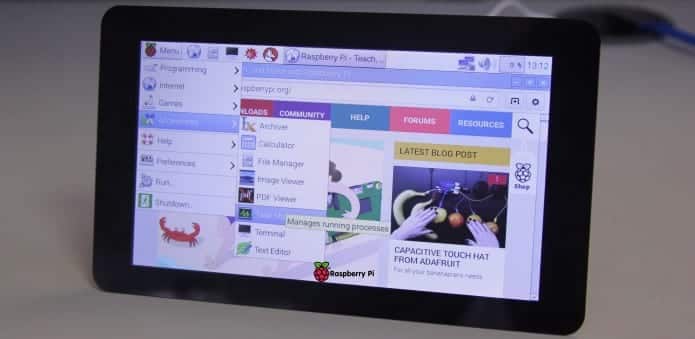Raspberry Pi gets its first official touchscreen display which can turn it into a tablet
Thanks to the device’s HDMI port, users of the tiny, low-cost Raspberry Pi have always been able to connect to a display fairly easily. However, to make it more easier for the users, the company on September 8 announced a Raspberry Pi touchscreen display for the small computer priced at $60 (Rs. 4,000 / £48).
It may look like a small piece of technology, but it has taken a while for the Raspberry Pi Foundation to get there. Officials with the Raspberry Pi Foundation began talking about it a year ago, but work on it has been going on even longer.
“Two years ago, I began the process of looking for a simple, embeddable display for the Raspberry Pi,” Director of Software Gordon Hollingworth wrote in a blog post. “I honestly believed it would only take us six months from start to end, but there were a number of issues we met … But we’ve finally got there.”
Among those issues met was work needed for new models of the PC, including the Raspberry Pi 2 Model B, which launched in February with a faster ARM system-on-a-chip (SoC) and support for Microsoft’s Windows 10 operating system. Now the display is ready for use.
The 7-inch touchscreen monitor can turn any Raspberry Pi Model A+, Model B+ and Raspberry Pi 2 Model B into a mobile device or a touchscreen tablet, or a home automation device with touchscreen control. The display’s frame also comes with a range of color options, which will cost a little extra—about $15.
It features an RGB 800×480 touchscreen display, with 10-finger touch support, and allows an onscreen keyboard to be added into the Raspbian OS for full functionality, which will allow it to be used without a physical keyboard or mouse. Learning and programming experience on the Raspberry Pi would be more easier, as the various educational software and programs available on the Raspberry Pi will be touch enabled. “Internet of Things” will also be ideal for the new display, the foundation said.
The first displays are on sale as a kit, which requires some do-it-yourself (DIY) construction. Buyers will get a 7-inch display, an adapter board, mounting screws, and a Perspex layer frame in a variety of colors. It also comes with the DSI ribbon cable and jumper wires used to power and connect the Pi. The required Raspberry Pi board and power supply are sold separately.
Earlier this year, the company had launched the upgraded second variant dubbed Raspberry Pi 2 at $35. It features a 900MHz quad-core ARM Cortex-A7 CPU, 1GB LPDDR2 SDRAM and has complete compatibility with Raspberry Pi. This can run the full range of ARM GNU/Linux distributions, including Snappy Ubuntu Core, as well as Microsoft Windows 10 according to the Raspberry Pi foundation.
The company’s another project, the Orange Pi has launched similar mini PCs including the OrangePi Plus – an open source single-board computer running Android 4.4 , Ubuntu, Debian, Rasberry Pi Image, using the AllWinner H3 SoC and1GB DDR3 SDRAM. The Orange Pi is available at $15.
The Raspberry Pi Foundation released the first of its mini-computers in 2012, and quickly gained popularity among developers, hobbyists, and educators, selling millions of devices. The Raspberry Pi touch-screen is now available via Swag store, at RS Components/Allied Electronics and at Premier Farnell/Newark in North America. It’s also on sale at Farnell Element 14 and CPC in UK and Europe.
To learn more about attaching and using the new Raspberry Pi display, check out the Raspberry Pi Foundation’s full instructions here.

